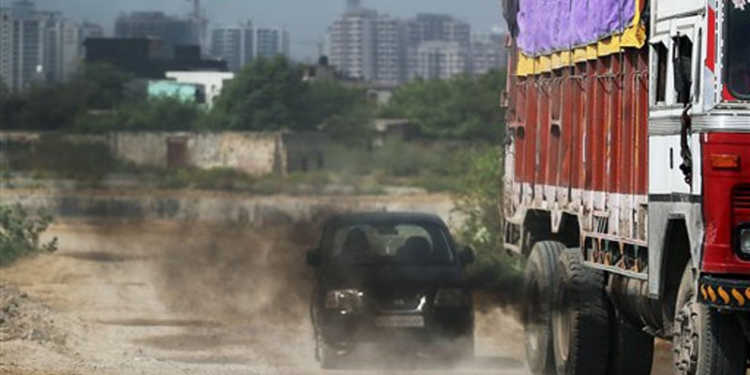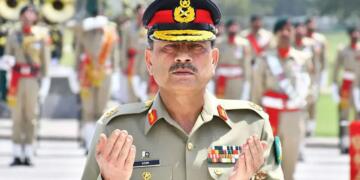On Sunday the 135km long Eastern Peripheral Expressway was inaugurated by Prime Minister Narendra Modi which will reduce the movement of commercial traffic by 35 per cent in Delhi. As estimated 52,000 vehicles will be able to bypass Delhi everyday. From day one the Eastern Peripheral Expressway has started having a solid impact. On the first day itself, 50,000 trucks were diverted to the expressway. This allowed them to reach their destination without passing through the city. Moreover, this was one-third of the heavy vehicles which enter the city daily. Normally 1.5 lakh heavily loaded trucks/vehicles enter Delhi every night. According to authorities, this is likely to reduce the traffic and congestion in a big way and will also help in reducing pollution.
As per a 2016 CSE study, 30% of particulate matter emission in Delhi was contributed by the trucks. Around 50 personnel have been deployed along the eight border posts connecting Delhi to EPE, to coordinate with Haryana and Uttar Pradesh police to provide turnaround facility to trucks not destined to travel into the city. Also the Union minister for road transport claimed that EPE could help in reducing pollution by 50 per cent.
Hogwash like odd-even are temporary means of pacifying people without achieving anything. What Nitin Gadkari has done is to bring about a long-term and sustainable solution to several of the capital’s problems.
In 1984, the Supreme Court had ordered Eastern and Western Peripheral Expressways to decongest Delhi. The work started when Modi government came to power. PM had laid the foundation for this project on 5th November 2015. The project of Peripheral Expressways around Delhi, comprising Western Peripheral Expressway (WPE) and Eastern Peripheral Expressway (EPE), connecting NH-1 and NH-2 from Western and Eastern side of Delhi, has been envisaged with the twin objectives of decongesting and de-polluting the national capital by diverting the traffic not destined for Delhi. The alignment of EPE starts near Kundli and passes through six parliamentary constituencies, namely Sonipat, Baghpat, Ghaziabad, Noida, Faridabad, and Palwal.
The construction cost of the project is about Rs 4617.87 crore. The expressway has been completed in a record time of about 500 days against the scheduled target of 910 days and it is also a fully access-controlled six-lane expressway. Entry and exit on the expressway is through designated interchanges only, the Expressway has 4 major bridges, 46 minor bridges, 3 flyovers, 7 inter-changes, 221 underpasses, 8 ROBs, and 114 culverts. This project has generated employment opportunities of about 50 lakh man-days.
PM Modi also inaugurated the first phase of the Delhi-Meerut Expressway, stretching from Nizamuddin Bridge to Delhi UP Border completed in record time of 18 months at a cost of about Rs 841.50 crore. It includes a 6-lane Expressway and 4+4 Service lanes, i.e. 14-lane facility from Nizamuddin Bridge in Delhi to UP Border. This is the first National Highway in the country with 14 lanes. This project is the best example of ‘where there is will there is way’. The foundation stone of the project was laid on 31 December 2015. The total length of the project is 82 kilometers of which the first 27.74 kms will be 14-laned, while the rest will be 6-lane expressway.
The project is likely to cost Rs 4975.17 crore. Delhi-Meerut expressway is expected to reduce the travel time between the two cities by 60 minutes. It will not only save time but also save fuel and this will help reducing environmental pollution . The expressway has many features to reduce the pollution such as a 2.5-metre-wide cycle track on either side of the highway, a vertical garden on the Yamuna Bridge, solar lighting system and also a watering of plants through drip irrigation only. There are also dedicated bicycle tracks on nearly 28 km stretch between Delhi and Dasna. It will also maximize the economic and social benefits. This expressway will not only reduce travelling time but it will also reduce the distance between major markets which will provide better services to urban people at better speed and of course there will be an increase in the productivity level. It is India’s first green and smart Highway. On a national level, the growth of highway construction is up by 25% . With this one cannot deny the fact that the Modi government has paid a special attention to the development of road networks in India.
































